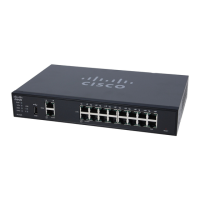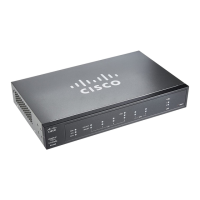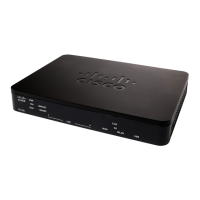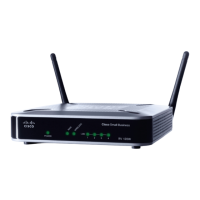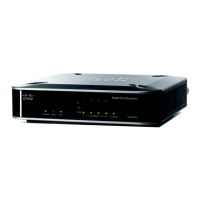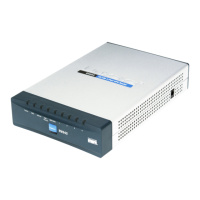DHCP
DHCP Setup
Cisco RV320/RV325 Administration Guide 47
4
• Client Lease Time—Amount of time in minutes that a network user is
allowed to connect to the router with the current IP address. Valid values are
5 to 43200 minutes. The default is 1440 minutes (equal to 24 hours).
• Range Start and Range End—Starting and ending IP addresses that create
a range of IP addresses that can be assigned dynamically. The range can be
up to the maximum number of IP addresses that the server can assign
without overlapping features such as PPTP and SSL VPN . Do not include this
device LAN IP address in this dynamic IP range. For example, if the router
uses the default LAN IP address, 192.168.1.1, the starting value must be
192.168.1.2 or greater.
• DNS Server—DNS service type; where the DNS server IP address is
acquired.
• Static DNS 1 and Static DNS 2—Static IP address of a DNS Server.
(Optionally) if you enter a second DNS server, the device uses the first DNS
server to respond to a request.
• WINS—Optional IP address of a Windows Internet Naming Service (WINS)
server that resolves NetBIOS names to IP addresses. If you do not know the
IP address of the WINS server, use the default, 0.0.0.0.
STEP 4 Enter the TFTP Server parameters:
• TFTP Server Host Name—Host name of the TFTP server.
• TFTP Server IP—IP address of the TFTP server.
• Configuration Filename—Configuration file name of the file used to update
a device.
Configuring DHCP for IPv6
To configure DHCP for IPv6:
STEP 1 Enter the IPv6 Address.
STEP 2 Enter the Prefix Length.
STEP 3 Select the DHCP Mode:
• Disable—Disables DHCP on this device. There are no additional parameters
to complete.
• DHCP Server—Communicates the client DHCP requests to the device
DHCP server.
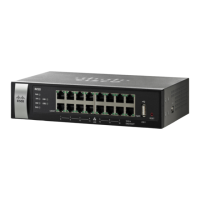
